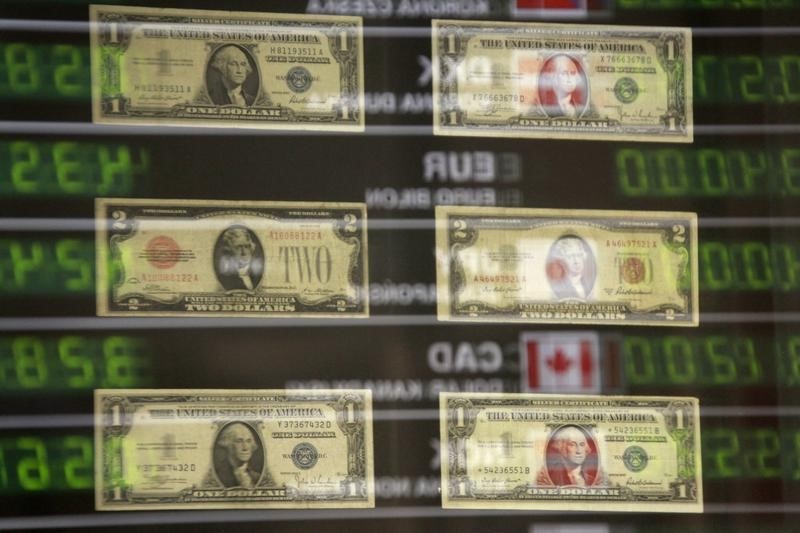* Canadian dollar at $1.2737, or 78.51 U.S. cents
* Loonie touches its strongest since June 10 at C$1.2680
* Bond prices lower across steeper maturity curve
TORONTO, June 23 (Reuters) - The Canadian dollar
strengthened to a nearly two-week high against its U.S.
counterpart on Thursday as increased chances that Britain will
stay in the European Union and higher oil prices supported the
risk-sensitive commodity-linked currency.
A series of late opinion polls favored Britons voting in
Thursday's referendum to stay in the European Union and
bookmakers' odds indicated a further shift towards the "Remain"
camp.
Optimism over Britain remaining in the EU helped drive up
stocks and oil prices. U.S. crude CLc1 prices were up 1.32
percent to $49.78 a barrel.
The loonie would weaken and the chances that the Canadian
central bank cuts interest rates would jump if Britain votes to
leave the European Union, strategists warn, noting the result
could hit global growth and spell bad news for
commodity-exporting countries.
At 9:06 a.m. EDT (1306 GMT), the Canadian dollar CAD=D4
was trading at C$1.2737 to the greenback, or 78.51 U.S. cents,
stronger than Wednesday's close of C$1.2839, or 77.89 U.S.
cents.
The currency's weakest level of the session was C$1.2843,
while it touched its strongest since June 10 at C$1.2680.
Gains for the loonie came after domestic data on Wednesday
showed retail sales rebounded in April to reach a record C$44.28
billion.
Still, the Bank of Canada has signaled that the economy may
contract in the second quarter after a solid start to the year
as a huge wildfire in Alberta weighs on oil production.
Canadian government bond prices were lower across the
maturity curve, in sympathy with U.S. Treasuries, as increased
risk appetite reduced investor demand for safe-haven assets.
The two-year CA2YT=RR price fell 7 Canadian cents to yield
0.635 percent and the benchmark 10-year CA10YT=RR dropped 78
Canadian cents to yield 1.315 percent. The 10-year yield touched
its highest since June 1 at 1.319 percent.
The curve steepened as the spread between the 2-year and
10-year yields widened by 4.3 basis points to 68 basis points,
its most in two weeks, indicating underperformance for
longer-dated maturities.
